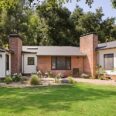
NASA’s Jet Propulsion Laboratory in Pasadena said its Voyager 2 spacecraft has lost communication with Earth due to a misalignment of its antenna.
The misalignment occurred on Friday, July 21, JPL said in a statement. It said a series of planned commands unintentionally caused the spacecraft’s antenna to shift, pointing two degrees away from Earth.
Because of this, communication with NASA’s Deep Space Network has been disrupted, meaning data being sent by the spacecraft is no longer reaching the network, and the spacecraft is unable to receive instructions from ground controllers.
JPL said the spacecraft is designed to reset its orientation a number of times each year to keep its antenna pointed accurately at Earth. The next scheduled realignment is on Oct. 15, after which communication should resume.
The mission team said it remains confident that Voyager 2 will maintain its planned trajectory even when communications are down.
Voyager 2 is currently situated more than 12.3 billion miles away from Earth. Meanwhile, Voyager 1, located almost 15 billion miles from Earth, continues to operate normally, unaffected by the communication issue faced by its twin spacecraft.
Voyager 2 was actually launched first on Aug. 20, 1977, while Voyager 1 was launched a few weeks later, on Sept. 5 that year. The primary mission was to explore Jupiter and Saturn. After making a string of discoveries there – such as active volcanoes on Jupiter’s moon Io and intricacies of Saturn’s rings – the mission was extended.
Voyager 2 went on to explore Uranus and Neptune, and is still the only spacecraft to have visited those outer planets.
JPL, a division of Caltech in Pasadena, built the Voyager spacecrafts and operates them. The Voyager missions are a crucial part of the NASA Heliophysics System Observatory, sponsored by the Heliophysics Division of the Science Mission Directorate in Washington.
For more details about the Voyager spacecraft, visit www.nasa.gov/voyager.
To keep track of the mission status, visit www.voyager.jpl.nasa.gov/mission/status.














 4 comments
4 comments


